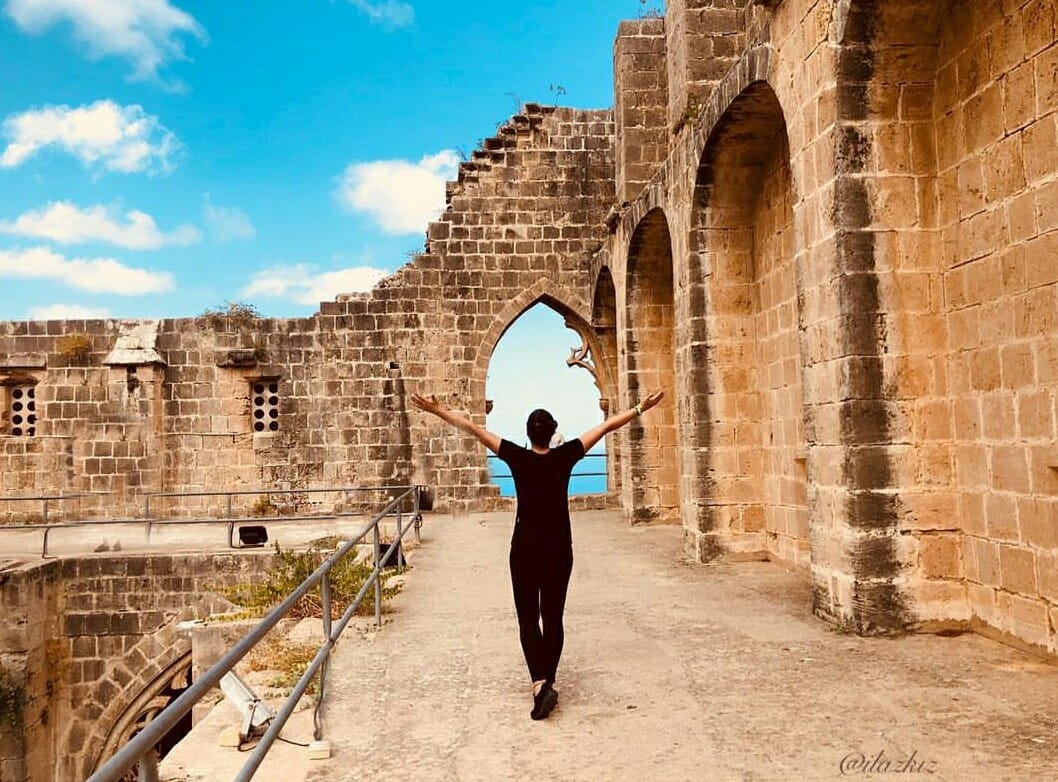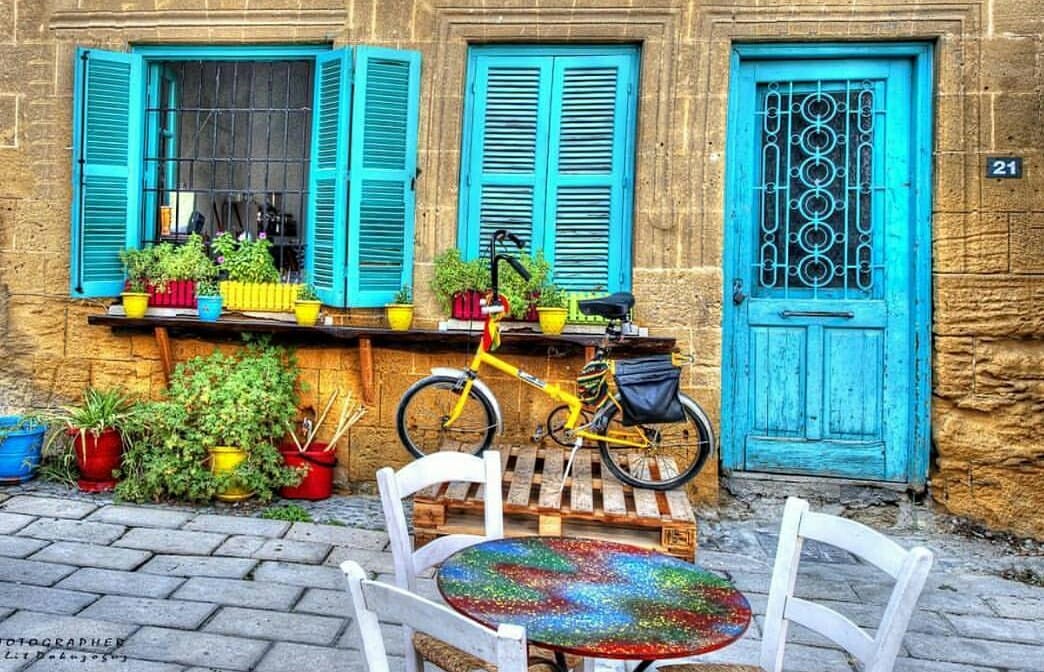Girne - Kyrenia
 For centuries Kyrenia was the visit card of Cyprus and with good reason, it is a city where modern and ancient intervened in a tight bond. It is a city where you can see 5 star hotels, shops with fashionable brands, modern restaurants of different cuisines, and still walk a few blocks and find yourself in the ancient environment with historical walls of the castle, standing strong overlooking the harbour. One can only guess how much these walls have seen, how many cultures and nations, battles and fights? No wonder that most property buyers in Cyprus have chosen to buy property in Kyrenia.
For centuries Kyrenia was the visit card of Cyprus and with good reason, it is a city where modern and ancient intervened in a tight bond. It is a city where you can see 5 star hotels, shops with fashionable brands, modern restaurants of different cuisines, and still walk a few blocks and find yourself in the ancient environment with historical walls of the castle, standing strong overlooking the harbour. One can only guess how much these walls have seen, how many cultures and nations, battles and fights? No wonder that most property buyers in Cyprus have chosen to buy property in Kyrenia.
There are a lot of legends and stories of how Kyrenia was founded. One claim that Kyrenia was founded in 1000 BC, other in 10th century BC.
There is little recorded about town’s history until the rule of Byzantines, when the town was secured against the Arab raids in the 7th century. Despite of this, however, the town could not be kept safe and up until 10th century Kyrenia was destroyed on several occasions, and it was not until the reign of Emperor Nicephoros Phocas that the enemies were finally driven away. It was around this time that the major Kyrenia range castles were built. The Lusignans, French dynasty, which ruled Cyprus from 1191 to 1489, developed strengthened the castle which they used as a royal residence as well as the military fort. French kings ruled over Cyprus for 300 hundred years, and Cypriots did not want the power to change. However, Venice was becoming stronger with each day and the Venetians wanted Cyprus for purely mercenary reasons. Its strategic position made it an ideal point from which Venice could dominate all eastern trade routes. The Venetians strengthened the castle in 1544, placing the new huge walls and towers outside the old castle perimeter and adding two strong bastions and one seaward to protect the harbour entrance. However these efforts were in vein, as they didn’t keep the Ottoman Empire from attacking Cyprus.
And they have succeeded in 1570 and stayed on the island for 307 years. When the British took over the governing of Cyprus they started to develop the city into a ideal place for gentle holiday. They built hotels, improved the roads, renovated buildings. Nowadays, Kyrenia or Girne belongs to the north side of the island. Tourists of all over the world come here to visit the fortress, walk in the picturesque harbour, climb to the top of the mountains to visit the castles and stand where once stood great kings and conquerors. However, the calm and measured beauty of traditional Cyprus, incorporated in the architecture and the breath of the Crusaders and the monks will never leave you. Be sure that the property you buy in Kyrenia will connect you with a great history.
Nicosia
Nicosia, the capital city of the island Cyprus is the last divided city in the world. It lies in Mesaoria, the central plain, located between two mountain ranges – Kyrenia range in the north and Trodos in the south. This position was very advantageous during centuries as most of the cities of Cyprus are located on the shore they were the constant victims of Arab and pirate raids. At these times living inland was safer, therefore Nicosia started to grow. From the main capital, Kyrenia and Nicosia beaches can be reached within a half hour drive. Being located in the centre of the island has the advantage that all destinations are easy to reach. If you are interested to buy Property in Nicosia, it would be a great investment as the value of property is fast increasing for the reason that the city constantly expanding.
It is believed that Lefkosa was build on the ancient city of Ledra, which dates to the 4th century BC. Lefkos, son of Ptolemy Soter, rebuilt the city in about 300 BC, hence the name.
Nicosia grew to become a very important administrative centre of the island, after the destruction of Salamis. For centuries the town passed from one owner to the other. When Richard the Lionheart conquered the island in 1191 during third crusade, he sold the city to the Knights of Templar. These knights rapidly made themselves unpopular, and in 1192 the national riot drove them into the city’s citadel. In the same year Richard permitted the sale of Cyprus’ government from the knights to Guy de Lusignan, who had lost his kingdom of Jerusalem. Since that time Lefkosa has stayed the capital of Cyprus. The town flourished under their rule and beautiful palaces and churches were built.
Nicosia was in Lusignan dynasty’s possession up until 1489 when the Venetians took over the island. They have done some changes to the city – the defences were rebuilt, city centre was reduced, however this didn’t stop the Ottomans to take over Lefkosa in the siege of 1570. For the next 300 years, Nicosia gradually deteriorated and by the time the British took over in 1878, the city was a squalid shadow of itself, with its fine buildings tumbling to ruin.
Under the British, many public works were undertaken, roads were built, utilities were installed, and by the time Cyprus became an independent republic in 1960, Nicosia was well on the way to becoming a modern European city. There are a lot of interesting places to see in Nicosia – Venetian column, Kyrenia Gate, buyuk Han, St. Sophia Cathedral. Take your time to walk around in the old city of Lefkosa, where the ancient walls hold the silence of the centuries.
Famagusta
 Famagusta, like any other major cities of North Cyprus, is an ancient site and has a most impressive array of the buildings.
Famagusta, like any other major cities of North Cyprus, is an ancient site and has a most impressive array of the buildings.
After the destruction of the ancient city of Salamis in 648, the inhabitants settled in a small lagoon, founded in 260BC by Ptolemaios, a successor of Alexander the Great. This small lagoon was the Famagusta. For centuries the city remained a small port. When the Crusades arrived to Cyprus, they were the ones to simulate the growth of the city, a halfway stop for businessmen and pilgrims alike, as they journeyed to and from the holy land. After fall of Acre in 1291 Famagusta opened its doors to all the Christians fleeing Palestine and Syria. As a result, Famagusta started to grow rapidly with all the new people along with their skills. It became the richest city in the world at the time. However, such success was short lived. During the coronation of Peter 2 in 1373 a serious riot broke out in the city. The two trading powers, Venice and Genoa, were in rival. A riot turned into war and Genoa sent armies to take the city by storm. And they did. Famagusta was isolated from the rest of the island. All the rich people left the city and when Venetians took over the rule of the island, Famagusta was half empty. Venetians reconstructed the harbour, reinforced the great walls protecting the city. It is believed that none other than Leonardo DaVinci advised on the reconstruction of the walls. When the Ottoman arrived to Cyprus they quickly took all the other cities, however Famagusta underwent a 10 months siege. With the improved defences, the Venetians under Marc Antonio held out for ten months. However, lack of supplies and hunger were causing serious problem for the Venetian troops inside the walls.
There was only 8000 Venetians and 200 000 Ottomans. The army inside the walls asked Venice for help, but it have never arrived. Ottomans build massive earth structures around the city and it enabled them to fire cannonballs inside the walled city. Some are still can be seen today. On August 1st, 1571 the Venetians surrendered. The ottoman empire did not do very much with Famagusta. The old city was not changed. Famagusta was used as a prison for dissidents and those who have offended sultan.
Nowadays Famagusta is a modern city with population of over 42000 people. Many offices, banks, restaurants, legal offices, and hotels are located in the city. If you are interested to buy property in Famagusta, we can find the right property for you. Famagusta has the most beautiful sandy beaches of the whole of Cyprus and you would live amongst ancient ruins which give Famagusta its special character.
There is also a lot to see in Famagusta as well as on the outskirts of it. History lovers will find Othello’s tower, the great walls of Famagusta, the many churches and cathedrals, and the Salamis ruins fascinating. People who would like to relax on their holidays can find the best service in many 5 star hotels located right on the seafront of Famagusts outscirts.
Guzelyurt
City of Guzelyurt, also known by the name of Morphou, is located in the west of Northern Cyprus. In Turkish "Guzelyurt" means "beautiful country". With a population of 12,000, the city has acclaimed as the "citrus capital" of Northern Cyprus, and is famous for oranges, lemons, apples and vegetables, and a large portion them crop is exported. Guzelyurt is also known for its popular orange festivals that are celebrated each year for two weeks. Until 1974 the town was mostly populated by Greek Cypriots. According to the census of 1960, occupancy of the Greek Cypriots in Guzelyurt was 6480, and the number of Turkish Cypriots -123. Between 1907 and 1948, Guzelyurt was one of the main stations of the Government Railways of Cyprus. In Guzelyurt there is a border between North and South Cyprus as well as the crossing point, which was opened for civilian use in 2003. It is located in Zodeia, south-east of the city. The intersection is used by vehicles, and passport control is performed on both sides of the border crossing. In Guzelyurt there are a lot of historical places that attract a lot of tourists each year. It is essencial to visit St. Mamas church, museum of Guzelyurt, Soli and Vouni, the monastery of St. Panteleimon.
If you like it quiet and you love nature, but still would like to be close enough to the city, then buying a propety in Guzelyurt would be the right choice for you. Guzelyurt is located to the west and still the least developed part of the North of Cyprus. Beautiful deserted long beaches and quiet country side are the main aspects for property buyers in the West.
Karpaz
The Karpaz Peninsula is the most eastern part of Cyprus; a thin strip of land stretching out towards Turkey. Karpaz is famous for its long sandy beaches stretching out for miles, its beautiful cliffs, unique wildlife, and turquoise sea. Karpaz peninsula is a very historic place with ancient monuments, churches and temples, basilicas and tombs, and even long-lost cities waiting to be explored. Karpaz is a quiet area where you will not find many buildings, holiday resorts, noisy clubs or even many shops. The peninsula was left as it was – traditional Cypriot villages, untouched nature and unharmed wildlife. The land in Karpaz is agricultural, with most people in the area living off it.
Karpaz is a favoured spot for Cypriots to break out of the hustle and bustle of the city and relax in the quiet and beautiful environment of Karpaz. If you are interested to buy property in Karpaz, we are certain to find just the right property for you.

 For centuries Kyrenia was the visit card of Cyprus and with good reason, it is a city where modern and ancient intervened in a tight bond. It is a city where you can see 5 star hotels, shops with fashionable brands, modern restaurants of different cuisines, and still walk a few blocks and find yourself in the ancient environment with historical walls of the castle, standing strong overlooking the harbour. One can only guess how much these walls have seen, how many cultures and nations, battles and fights? No wonder that most property buyers in Cyprus have chosen to
For centuries Kyrenia was the visit card of Cyprus and with good reason, it is a city where modern and ancient intervened in a tight bond. It is a city where you can see 5 star hotels, shops with fashionable brands, modern restaurants of different cuisines, and still walk a few blocks and find yourself in the ancient environment with historical walls of the castle, standing strong overlooking the harbour. One can only guess how much these walls have seen, how many cultures and nations, battles and fights? No wonder that most property buyers in Cyprus have chosen to  Famagusta, like any other major
Famagusta, like any other major 
